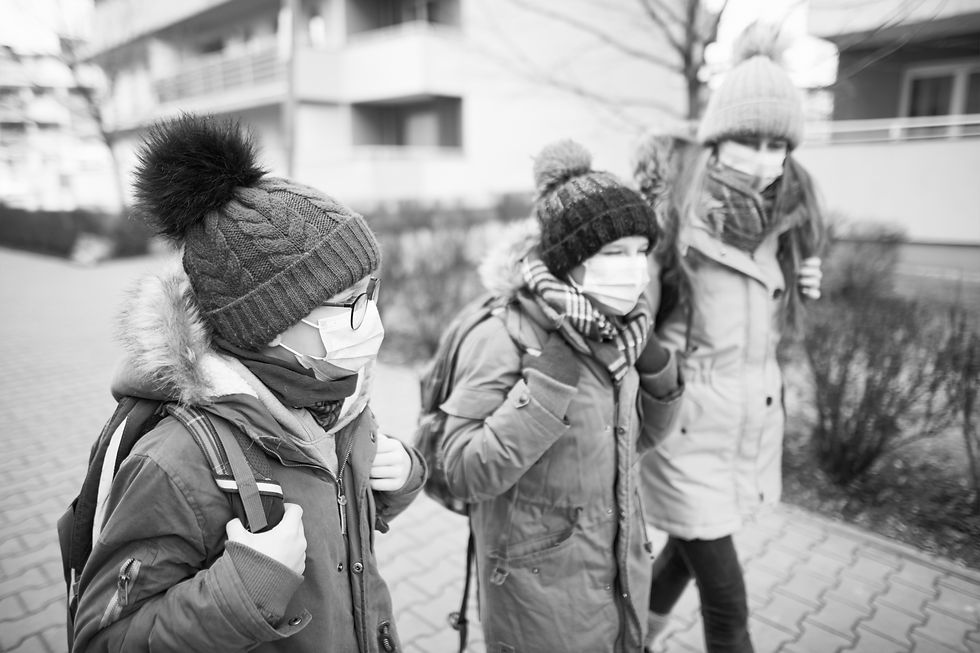“Every aspect of a child’s environment is potentially significant for their mental health and cognitive development.”



What to do next
Equal Life leaves a legacy of new frameworks and tools to help drive future research forward. Here are our suggestions for building on our findings:
Use the frameworks we have developed to design interventions with input from a range of professional disciplines (such as spatial design and planning, environmental hygiene, education, health and social care.)
Work together
-
When conducting research or interventions, our measuring and data analysis tools can help lead to reliable conclusions and potentially, provide evidence for wider applications.
-
Follow our lead by using methods to promote equity when implementing interventions, to avoid exacerbating wider social inequalities.
Think big
We recommend co-designing and implementing neighbourhood-level interventions with local people.
Act local
More evidence is needed in many areas before results can be put to practical use by policy makers and professionals working with children.
Key areas to focus on in the future are:
-
Further refining methods of assessing combined exposures
-
Replicating studies on combined exposures in different regions, settings and age groups
-
Expanding studies on:
-
Mediating factors
-
Structural and social inequalities
-
Biomarkers of children’s mental health
-
Keep going
“The bigger picture matters”
Focusing on interactions and connections between exposures can offer nuanced and valuable evidence on the causes of poor mental health and cognitive development. In this way, the exposome is even more than the sum of its many parts.
Our literature reviews, analysis and in-depth studies all point to the following conclusions:
-
A combination of physical and social exposures predict mental health and cognition in children.
-
Mental health risks and cognitive developmental risks are associated with noise and air pollution and having less access to green areas.
-
These effects are exacerbated by poor sleep, stress and low levels of self regulation.
-
But also parental and child perception of the neighbourhood quality can either worsen or alleviate the effects on mental health and cognitive development. fect on these risks.
1
“Places matter”
Where children grow up has a huge influence on their development. Again, nuances matter - each city, town and neighbourhood has a unique exposure profile which needs to be quantified and taken into account when planning effective interventions or policy actions.
Our research shows that:
-
In order to thrive, children need well-designed, walkable neighbourhoods with easy access to greenspace and play areas
-
Previously underrated factors, such as parent’s perception and attitudes, can affect frequentation of playgrounds and restorative spaces
-
Population density is the key differentiator between urban and rural environments and this affects children’s mental health and development differently”
2
“Age matters”
To understand the impact of the exposome on every developmental stage, we asked “Where and how do children spend their time as they grow up? What are the key exposures for each age group, and how do they affect mental health and cognition later on in life ?”.
Our research shows:
-
The prenatal period is important for neurodevelopmental disorders – for example, low birth weight is linked to ADHD and autism
-
For children under 3, maternal health and the family structure and interactions environment and relationships are particularly significant next to the physical circumstances at home
-
After the age of 3, the physical environment and social context outside the home become important
3
Faced with this complex picture, we started by asking:
“What do children need to thrive and realise their potential?"
What settings and activities matter most for their mental health and development, and at what age?
What role do factors such as sleep, stress, and self-regulation play?”

Findings
“Inequality matters”
Mental health problems and delays in cognitive development are more common in socially deprived areas.
Our research shows that:
-
Negative physical and social environmental factors tend to cluster together – we found a link between poor access to green space and living in a socio-economically deprived neighbourhood.
-
Neighbourhood socio-economic profile matters – to the point that where children live affects them more than their family income.
-
The concept of equity needs to be a fundamental principle for the planning, implementation and evaluation of urban interventions.
4
1
ADHD and Autism
Pre-perinatal exposure in connection with ADHD and Autism, revealed that physical variables raked higher (being more important), than social exposome. Low birth weight is indicated as a mediator in these relationships.
2
Cognitive development - Selective attention
Analysing social and physical exposome at pre/perinatal and 0-3, years of age indicate mainly a relationship with indicators of the physical dimension
3
Internalising and externalising behaviors
When analysing exposures in 7-12 years of age in relation to Internalising and externalizing behaviors measured by SDQ-scores both social dimension variables on individual and municipality levels rated as important, as well as variables on buit up area, urban density and greenspace within the physical dimension.
4
Wellbeing, Life Satisfaction,
Happiness and Prosocial behavior
Exposures in 7-12 years old in assocation with wellbeing, life satisfaction, happiness and prosocial behavior indicate an association with the physical built up area and road network as well as green space. Voter participation in the municipality also rated as important.
_edited.jpg)